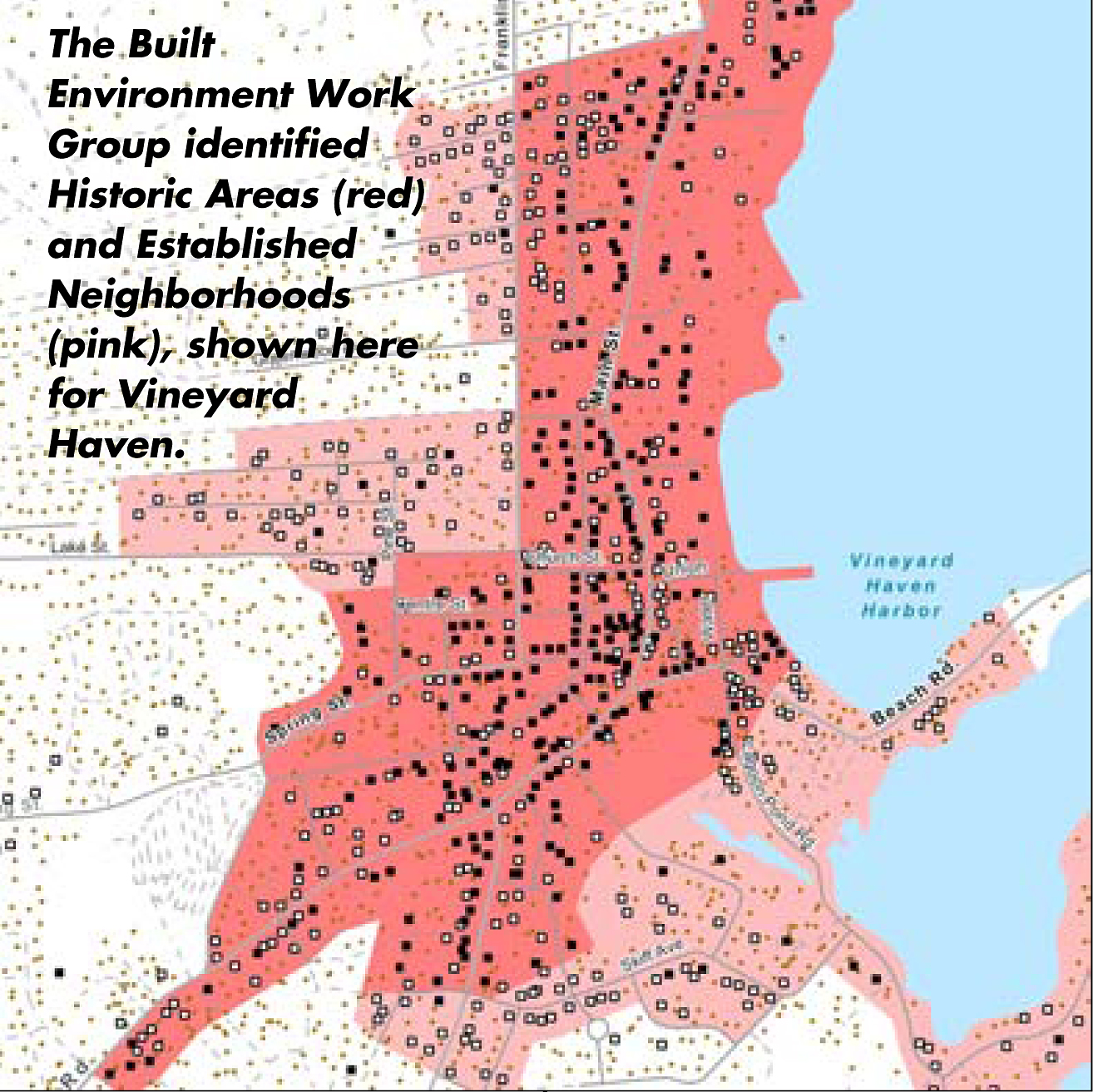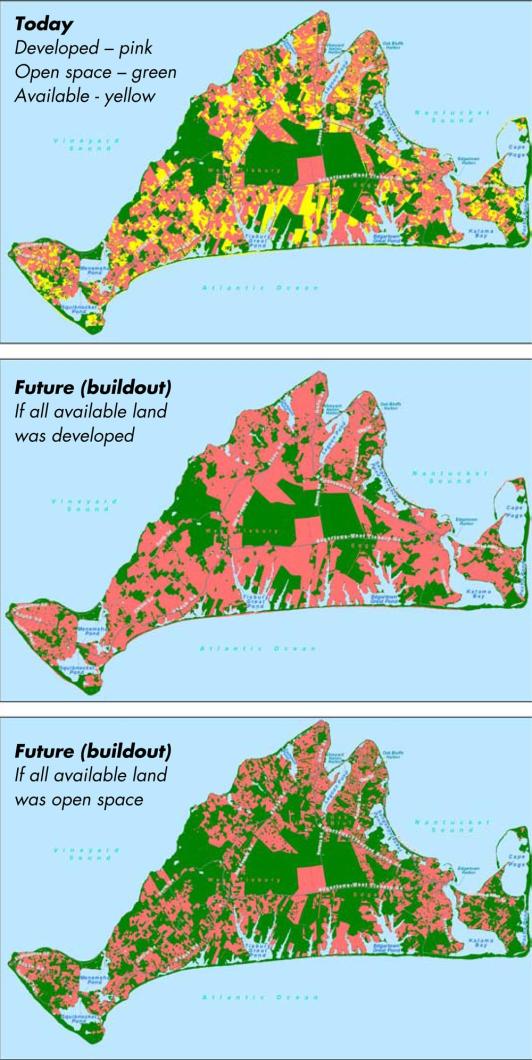The statistics are sobering: Projections of how many buildings could built under current zoning on the Vineyard reveal that about 6,000 new homes could be added to the present number of 16,000 over the next 50 years. And if the Island were to maintain the current ratio of 56 per cent seasonal homes versus 44 per cent year-round homes, this would translate to a year-round population growth from the current 15,000 to about 21,000.
And those are conservative estimates.
This all begs several important questions, such as where should the development take place? How much new development should be allowed? And how can it best fit with the Island’s character, environment and quality of life?
Those and several other key questions about the future of development on the Vineyard will be discussed during a special forum hosted by the Martha’s Vineyard Commission tomorrow at 7:30 p.m. at the Agricultural Hall in West Tisbury.
The forum is part of the ongoing effort to draft the Island Plan, an ambitious and far-reaching planning initiative that will attempt to chart the Island’s course over the coming decades. The plan looks to find a way for the Vineyard to manage its economy and resources in a manner that better sustains its environment, character and quality of life.
Architects of the plan have broken into six groups, each of which has focused on specific planning concerns such as water resources, housing, natural environment, livelihood, commerce, energy and waste and growth and development. The latter is the subject of this week’s forum.
And while the other planning concerns have generated considerable interest, the topic of development and growth has generated the most interest during the Island Plan discussions — a forum on the same subject last year drew over 100 people.
Data gathered through the Island Plan initiative shows that Island residents and visitors alike feel strongly about protecting the Vineyard from uncontrolled growth. In a survey conducted three years ago of 3,000 residents and visitors, 95 per cent of respondents said protecting the Vineyard’s environment and character was a high priority, while 7 per cent said promoting development and growth was important.

Many around the Island believe a lack of planning has already led to overdevelopment during the past few decades — most notably during the so-called Clinton years when President Bill Clinton vacationed here, putting the Island in a fresh spotlight of national attention. Henry Stephenson, an architect and member of the Tisbury planning board, said the Island Plan will hopefully help point the way.
“I personally think we are heading toward more succinct land use regulations and building codes, but there are other ways to plan responsibly. The first step is to discover the potential for more development. I would say the recent period of large developments are over, but that does not mean we won’t be seeing more development here, because we will,” he said, adding:
“If you look at the existing zoning laws, you realize even without major developments, there is plenty of room for growth. If everyone simply decided to build normal additions [to their homes] or auxiliary apartments, development here would skyrocket.”
Commission executive director Mark London said current projections show the year-round population could grow from 16,000 to 24,000 in the coming decades, which would translate to 50 per cent more traffic and more nitrogen pollution in coastal ponds.
Also, if current trends continue, about 80 per cent of the remaining open land would be developed. He said Island planners could change zoning regulations to allow more, or fewer, new houses and guest homes, or increase or reduce acquisition of open space. But even taking such a straightforward approach might have unintended consequences — for example, limiting the amount of new construction could drive up the cost of homes while exacerbating the lack of affordable housing.
“It’s an important question— what is the relationship between growth and affordability? What if we softened the zoning regulations and allowed more construction in certain areas, would it make housing cheaper? Or what if we made the zoning more stringent and limited growth. The concern is the Island is already too small and so many people want to be here; the cost of property could skyrocket,” he said.
Mr. London noted that historically development has taken place in or around town centers; but in recent years development on the Vineyard has shifted to the countryside where it threatens the Island’s fragile natural resources. He said there are potential advantages to limiting growth rates: it allows more time for open space acquisition and to create incentives for affordable housing or smart growth, giving a community time to adjust.
Bill Veno, a senior planner for the commission, said planners may want to identify the best areas for future development around the Island. He said certain under-utilized areas close to services and transportation — like the area around the Tisbury Park and Ride — may be well suited for mixed-use development.
But he said the key to success is gathering as much public comment as possible.
“We want as many people to get involved in this process as possible. This is their Island, and they should have a say in its future,” he said.




Comments
Comment policy »